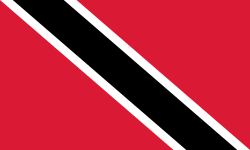Hymna Trinidadu a Tobaga
| Kovaný z lásky ke svobodě | |
|---|---|
 | |
| Hymna | |
| Slova | Patrick Castagne, 1962 |
| Hudba | Patrick Castagne, 1962 |
| Přijata | 9. srpna 1962 |
| Forged from the Love of Liberty instrumentální Problémy s přehráváním? Nápověda. | |
Hymna Trinidadu a Tobaga je píseň Forged from the Love of Liberty (česky Kovaný z lásky ke svobodě). Původně byla složena pro Západoindickou federaci (1958–1962) pod názvem A Song for Federation. Trinidad a Tobago byl členem federace, avšak v roce 1962 se spolu s Jamajkou osamostatnil. Stát pak vyhlásil výběrové řízení na státní hymnu, do něhož bylo přihlášeno 33 melodií, 834 textů a 306 melodií s texty. Jedním z předložených návrhů byla i upravená verze A Song for Federation, uvedená nově pod názvem Forged from the Love of Liberty. Dne 9. srpna 1962 vyhlásil premiér Eric Williams tento vítězný návrh a Patrick Castagne (1916–2000)[1] za něj obdržel zlatou medaili s odměnou 5 tisíc dolarů ve vládních dluhopisech.[2]
Text hymny
- Forged from the love of liberty
- In the fires of hope and prayer
- With boundless faith in our destiny
- We solemnly declare:
- In the fires of hope and prayer
- Side by side we stand
- Islands of the blue Caribbean sea,
- This our native land
- We pledge our lives to thee.
- Islands of the blue Caribbean sea,
- Here every creed and race finds an equal place,
- And may God bless our nation
- Here every creed and race find an equal place,
- And may God bless our nation.
- And may God bless our nation
Odkazy
Reference
V tomto článku byl použit překlad textu z článku Forged from the love of liberty na anglické Wikipedii.
- ↑ National Songs [online]. Embassy of the Republic of Trinidad and Tobago [cit. 2015-06-15]. Dostupné v archivu pořízeném dne 2013-09-28. (anglicky)
- ↑ GHANY, Hamid. Understanding our national anthem. First Magazine [online]. 2012 [cit. 2015-06-15]. Dostupné v archivu pořízeném dne 2013-09-28. (anglicky)
Související články
- Vlajka Trinidadu a Tobaga
- Státní znak Trinidadu a Tobaga
Média použitá na této stránce
Autor: BaronJaguar, Licence: CC BY 4.0
Coat of arms of Trinidad and Tobago (2025 revision)
Instrumental version of "Forged from the Love of Liberty," performed by the United States Navy Band

